

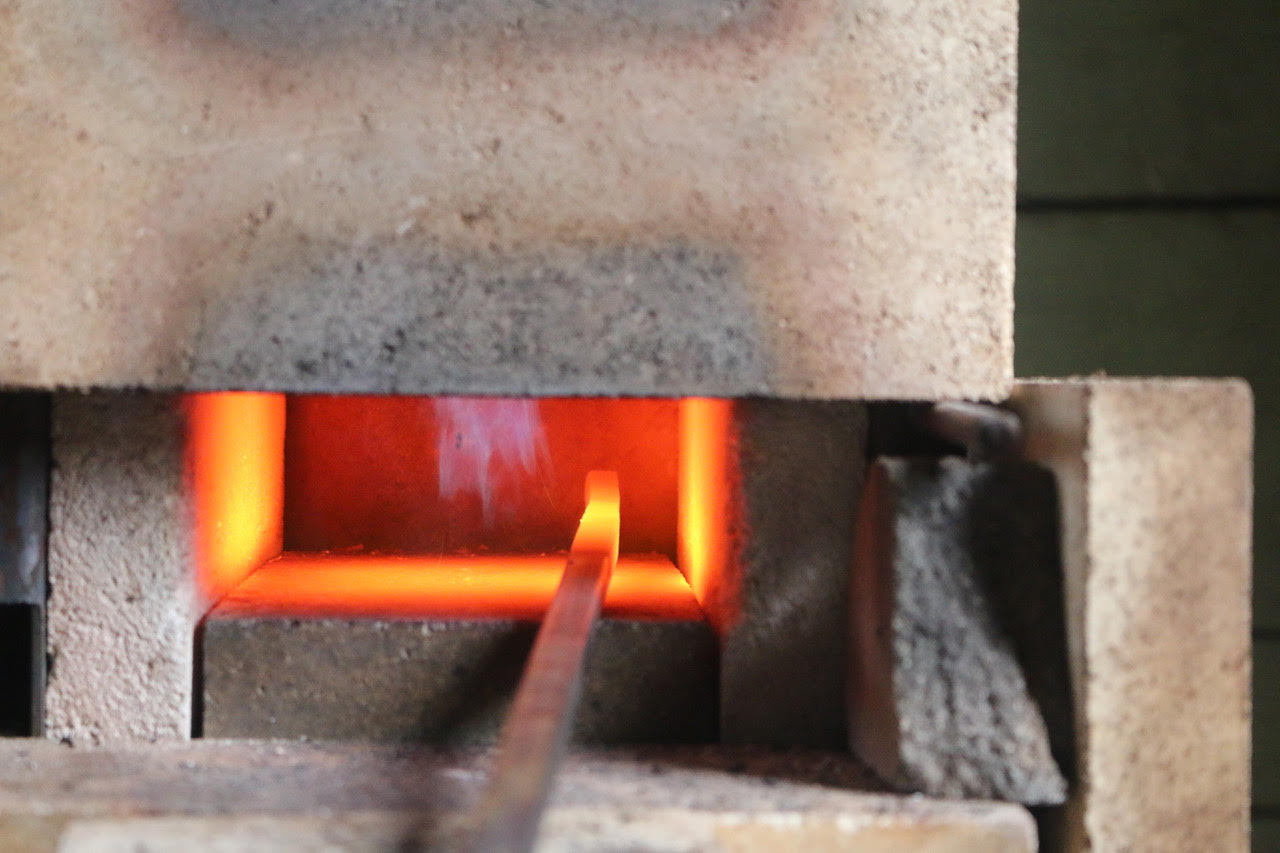
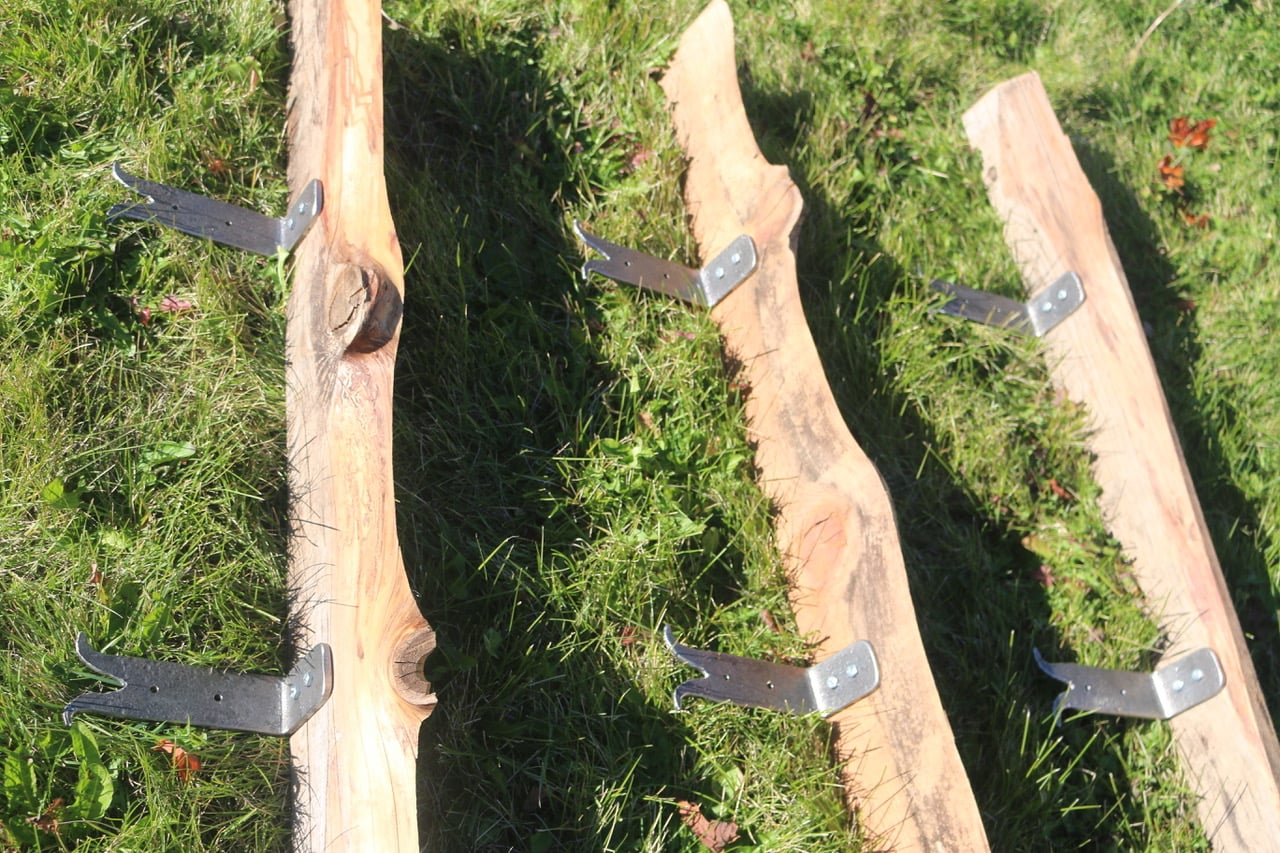
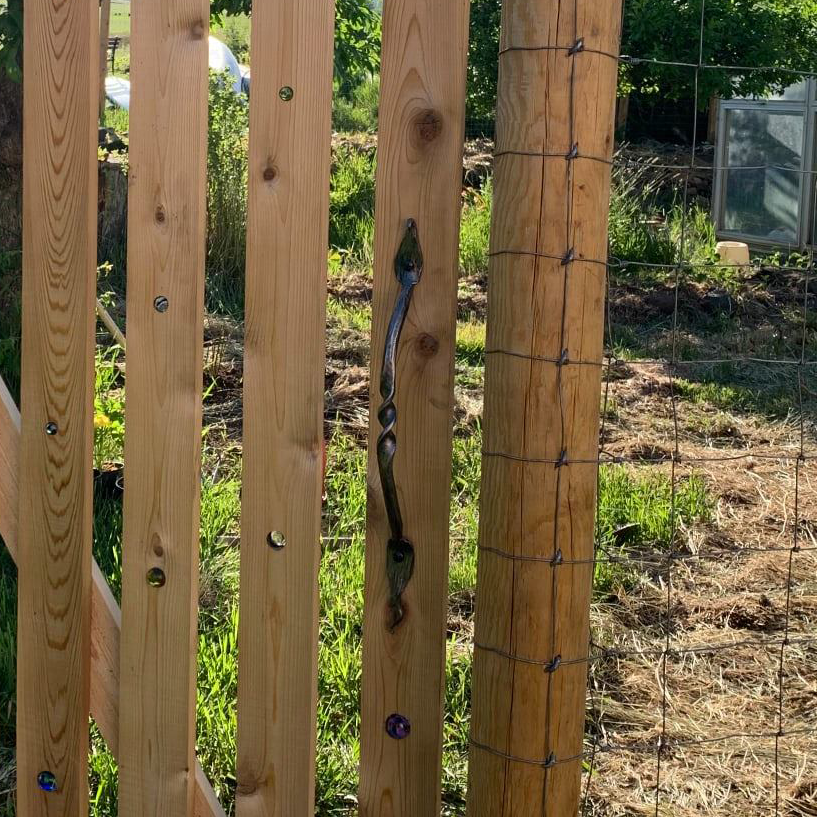
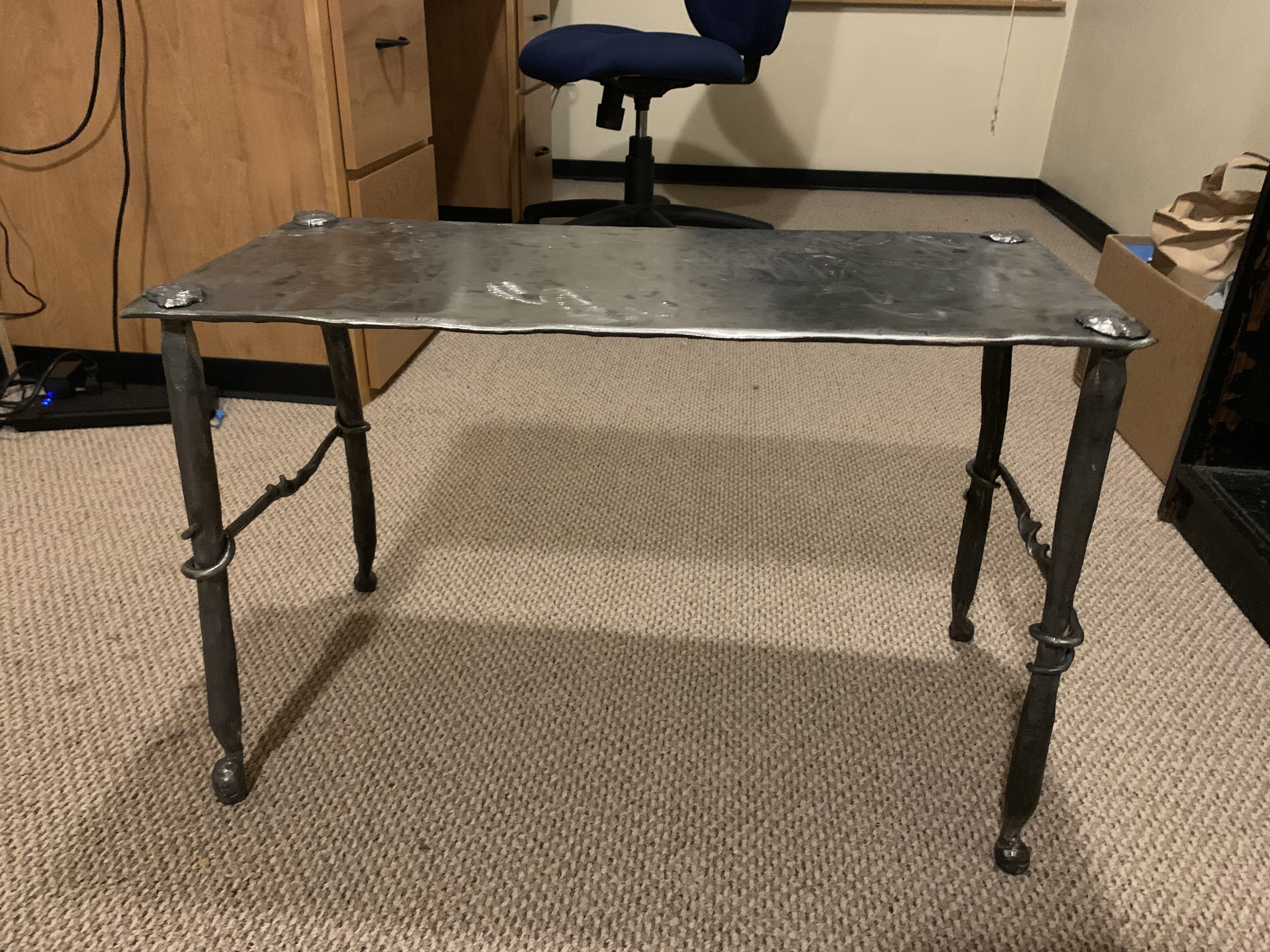
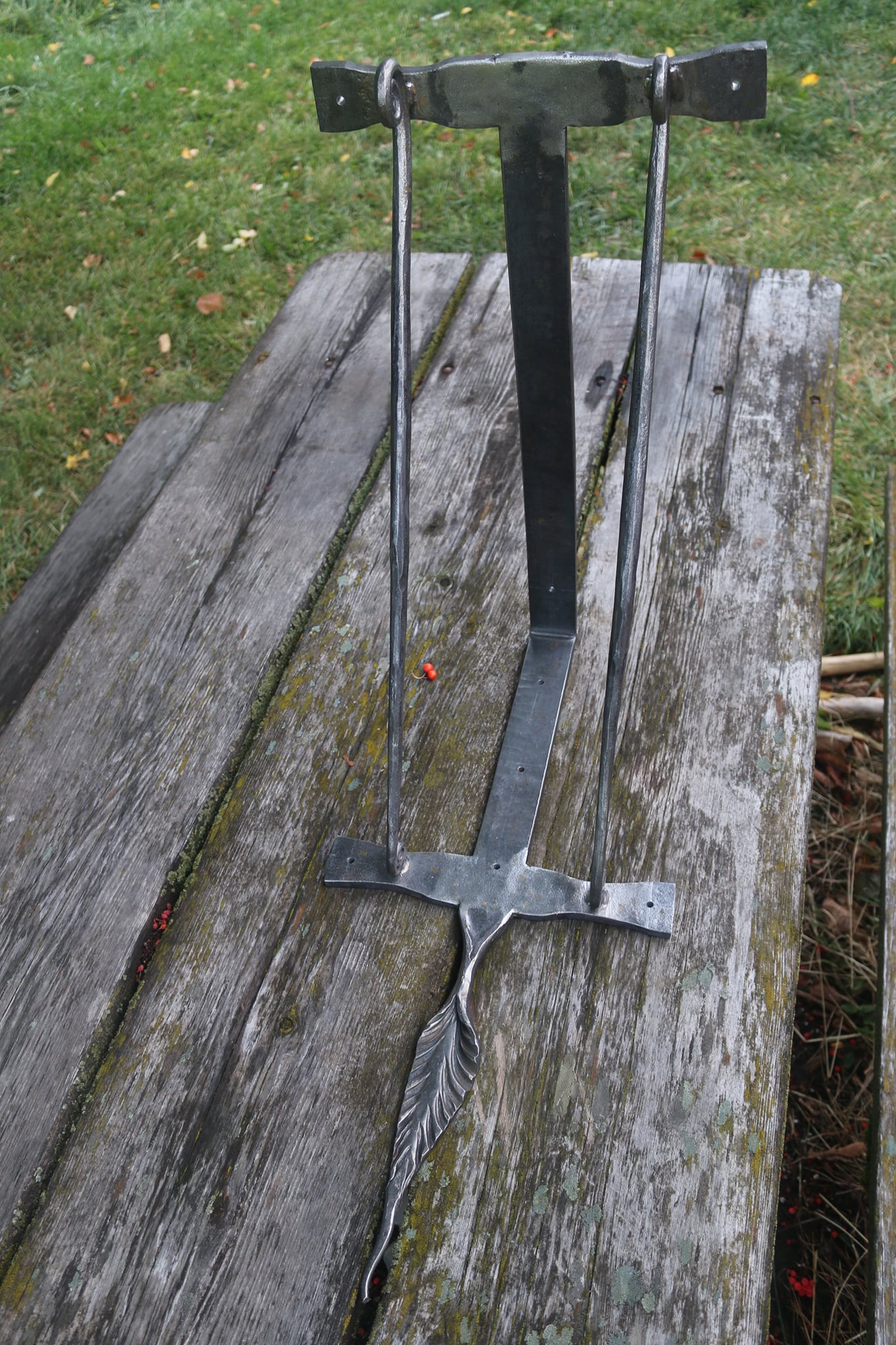
Since the winter of 2018, I have been pursuing blacksmithing. This Journey began in a friend's barn after school hammering railroad spikes into knives.
After several months, I decided to invest in my own tools. My Spanish teacher (who also happened to be a Forged in Fire champion) gave me an old propane forge to use, and a family friend got me in contact with a person who was selling an anvil for 300 dollars.
I set up shop in an old shed on my family farm. This included checking all of the wiring that was suspended (in a very homemade fashion) from the barn to the shed, and then to a breaker in the barn. My father and I mended the old line and reconnected it. So far, the ancient 30 amp fuse has proved to be plenty.
The new shed was an absolute mess with old straw and other farm debris as it had been housing chickens, and at one point, a bummer calf. I cleaned it thoroughly, and then moved in my forge and anvil. I located a suitable metal table from around the farm, and purchased a belt sander from a different friend after school. I aquired and made several more tools, and I was up and running!
I focused my work largely on things like hooks, hangers, handrails, bottle openers, and handles in the beginning, and soon I opened a booth in the local farmers market, where I peddled my wares, and took commissions. This resulted in a few notable sales, such as cabinet handles for the new boardroom redesign in the county courthouse.
As time passed, I was offered an apprenticeship from the same family friend who had found me the anvil--who also happened to be a grandmaster smith with over 40 years of professional experience, and some of the most beautiful ironwork in Oregon. I worked for him for around half a year, and learned an immense amount during that time.
I had a brief hiatus from the craft as I departed for college in Saint Paul, MN at Macalester College, however, I found work in the University Idea Lab, and subsequently the shop, where I became interested in the idea of a power hammer, and built a working (sort of) model out of scrap. At the time though, I didn't understand how the linkage of a power hammer works.
For those reading this who are unfamiliar with power hammers, they are essentially machines that in one way or another (mechanical, pneumatic) allow the user to control a reciprocating ram or hammer, generally more powerful and repetitive than a human is capable of, to shape or forge metal. In practice this often looks like a huge ram coming down over and over very quickly on a bottom anvil and a piece of hot metal controlled and moved on the bottom anvil to control the forging.
After my freshman year at Macalester College I came home for the summer and built a fully functional power hammer that used a cam wheel, driven by a motor that used a belt as a slip clutch controlled by a pedal to raise and lower a sledge hammer in guides, linked to the cam with a spring. For the design I used only what I found around the farm.
That fall I transferred to the University of Oregon and I relocated my shop to a barn in Elmira that I had arranged to rent. For the duration of that year I made as much time as possible to forge, and I crafted a queen bed for myself, along with a lantern, many hanger, and hooks.
The person I was renting from decided to move at the end of the year, so I needed to move my things again. I decided to move them to an artist's cooperative, where I rented a space and used the shared spaces. There I continued blacksmithing work, but became engrossed in building an overhead ram power hammer, again mainly from scrap from both the cooperative and the nearby junkyard. This design was more complex, and I build a working DuPont linkage out of old brake pads and a porch swing spring.
The hammer briefly worked, but it was absorbing enough of my time and energy, and to make it work well would have required much more that I needed to focus on intensifying academics, that I decided to take a break from forging, and at the end of my junior year, I moved my shop back home to where it began. Over the course of the years, I'd acquired many more tools, and it had become seriously better equipped with a torch, band saw, drill press, another anvil and forge, and many more tongs and hammers.
At the end of fall term of my senior year, I got a job working in the blacksmithing and glass shop in the University of Oregon Craft Center. I ended up almost exclusively glassblowing with a world class glassblower, and I learned a ton and discovered a passion for it.
Now, back at home after graduation, I am working to combine the art forms and to create lanterns with the glass style of Murano lanterns, but forged metal as well, with the hope of selling them to local businesses.